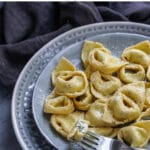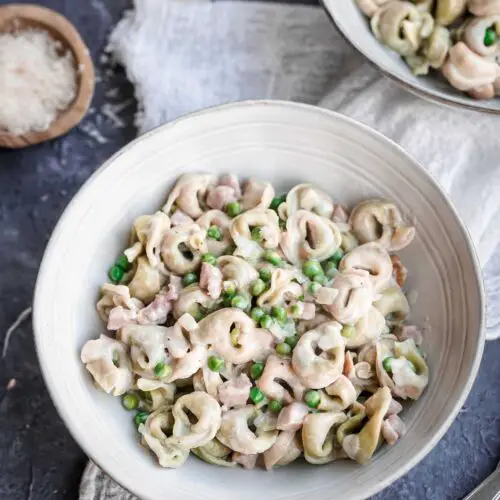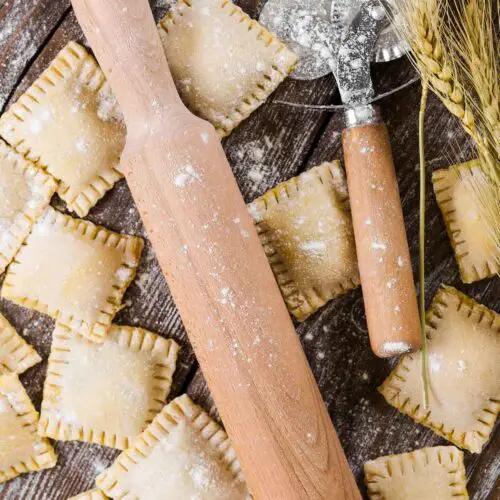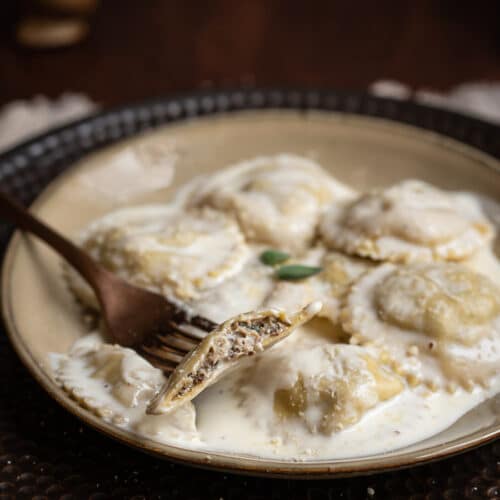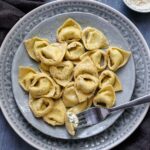
Beautiful handmade Tortelli or Tortelloni, filled with creamy aromatic Ricotta mixed with all the fresh herbs such as tarragon, sage, basil, lemon thyme, and chives. But you can use whatever fresh herbs you have available! A fantastic dish to impress your dinner guests.
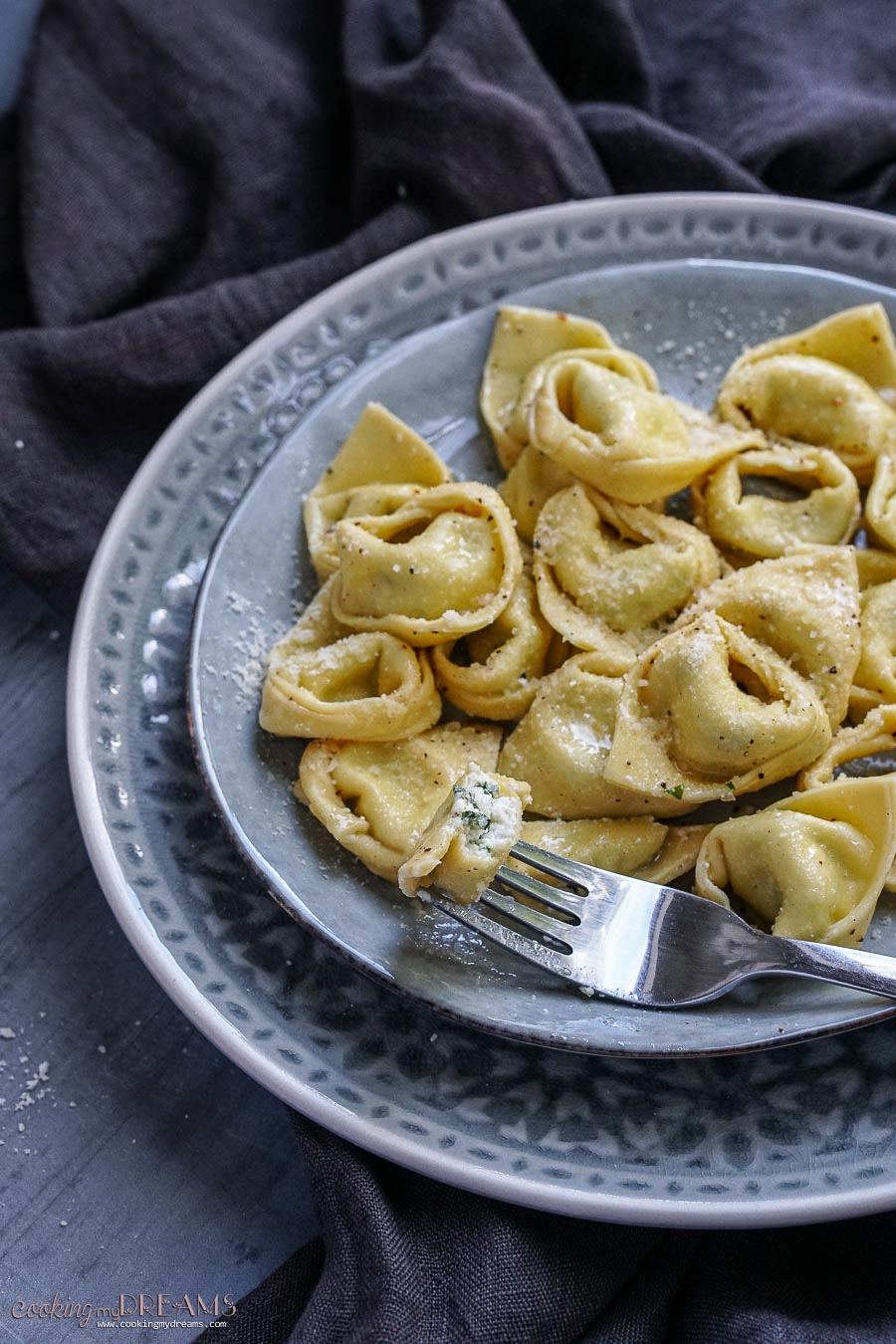
Tortelloni, the larger cousin of tortellini, offers a generous filling of creamy ricotta and a harmonious blend of fresh herbs that awaken the senses. This recipe is a celebration of texture and taste. Whether you're looking to impress guests at a dinner party or indulge in a comforting meal at home, this dish is versatile and delivers flavor and sophistication.
The choice of fresh herbs, including basil, parsley, and thyme, not only infuses the ricotta filling with depth and aroma but also complements the delicate pasta dough. Each bite of this dish is a journey through lush gardens and the rustic, sun-kissed Italian countryside. The simplicity of the ingredients allows the natural flavors to shine, making it a perfect dish for those who appreciate the finesse of Italian cooking.
For more stuffed pasta recipes, check out also these Cheese Cappelletti with Asparagus sauce, and these Wild Mushrooms Ravioli.
Jump to:
What is the difference between Tortelloni and Tortellini?
Tortelli, or Tortelloni, is a pasta shape typical of the Emilia Romagna region. They're similar in shape to the much more famous Tortellini, but they're much larger and can have a variety of different fillings.
The difference between tortellini and tortelloni is mainly in their size and filling. The name "Tortelloni" means large Tortelli while "Tortellini" means small Tortelli. The funny thing is that the name Tortelli instead is given to most filled pasta shapes as a generic name, although many regions may argue on the "original" Tortelli.
The filling or Tortellini, by tradition, can be only one. A paste of meat, Mortadella, and Parmigiano cheese is the classic filling. They're also very small and usually served in meat broth. Tortelli and Tortelloni, instead, are larger and can have a multitude of different fillings, just as far as your imagination can go. You can also serve them in broth or with sauces like Bolognese Ragù, or the more classic Butter and Sage Sauce.
Other recipes with Tortelli, Tortellini, and Tortelloni are "Tortelli Mugellani" (Potato Ravioli), this Cheesy Baked Tortellini or these Cheese Cappelletti with Asparagus sauce.
Check out also this extensive guide with step-by-step videos on how to make 10 different shapes of fresh pasta without a pasta machine.
Ingredients
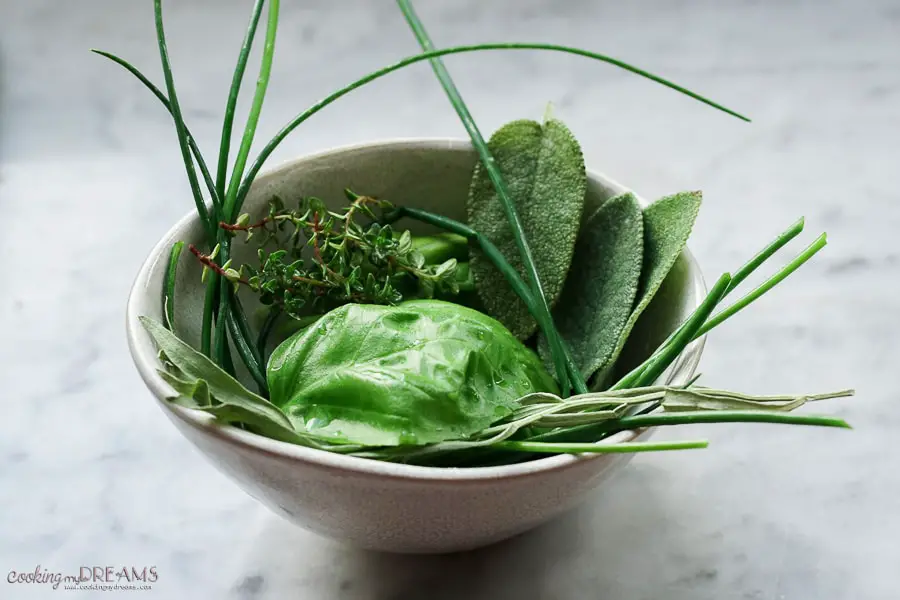
- Flour: A fine, high-protein wheat flour ideal for making smooth and elastic pasta dough. Its fine grind allows for a silky texture in the finished pasta. All-purpose flour can be used, or the Italian "00" Flour.
- Eggs: Acts as the binding agent for the flour, adding richness and moisture to the dough. Ensure they are at room temperature to incorporate more easily.
- Ricotta Cheese: Opt for full-fat ricotta for its creamy texture and mild, sweet flavor. It serves as the base of the filling, providing a luscious mouthfeel. For a dairy-free alternative, try almond or cashew ricotta.
- Fresh Herbs: I used Chives, Basil, Tarragon, Sage, and Lemon Thyme. Feel free to experiment with other herbs like rosemary or mint for a different flavor profile. See below for more details.
- Parmesan Cheese: Adds a nutty, salty depth to the filling. Grating it fresh ensures the best flavor and texture.
Which fresh herbs can I use?
In my garden, I have a variety of Mediterranean herbs like Basil, Lemon Thyme, Rosemary, Sage, Mint, Chives, and more. For this Ricotta filling, I decided to use only Tarragon, Sage, Basil, Chives, and Lemon Thyme. Although you can use any herb you have available, be careful about the quantities and proportions based on the herb's flavor.
Some plants have a much more intense flavor than others, such as Sage and Rosemary. So be careful to not add too much of these otherwise they will overpower all the other flavors. Basil and Chives, instead, have a much milder flavor so you can add them abundantly.
For your tortelloni filling, I suggest you get a bunch of herbs, chop them finely and mix them, then taste. Based on your taste you can make adjustments adding more of what's missing. You can also use some dried herbs in the mix, but the flavor and consistency of fresh herbs go very well with the creamy Ricotta.
Variations
- Spinach and Ricotta Tortelloni: Add steamed and finely chopped spinach to the ricotta filling for an extra layer of flavor and color.
- Lemon Zest: Incorporate the zest of one lemon into the ricotta mixture for a citrusy twist.
- Mushroom and Ricotta Tortelloni: Sauté mushrooms until golden, finely chop, and mix with ricotta for an earthy variation.
Instructions with photos
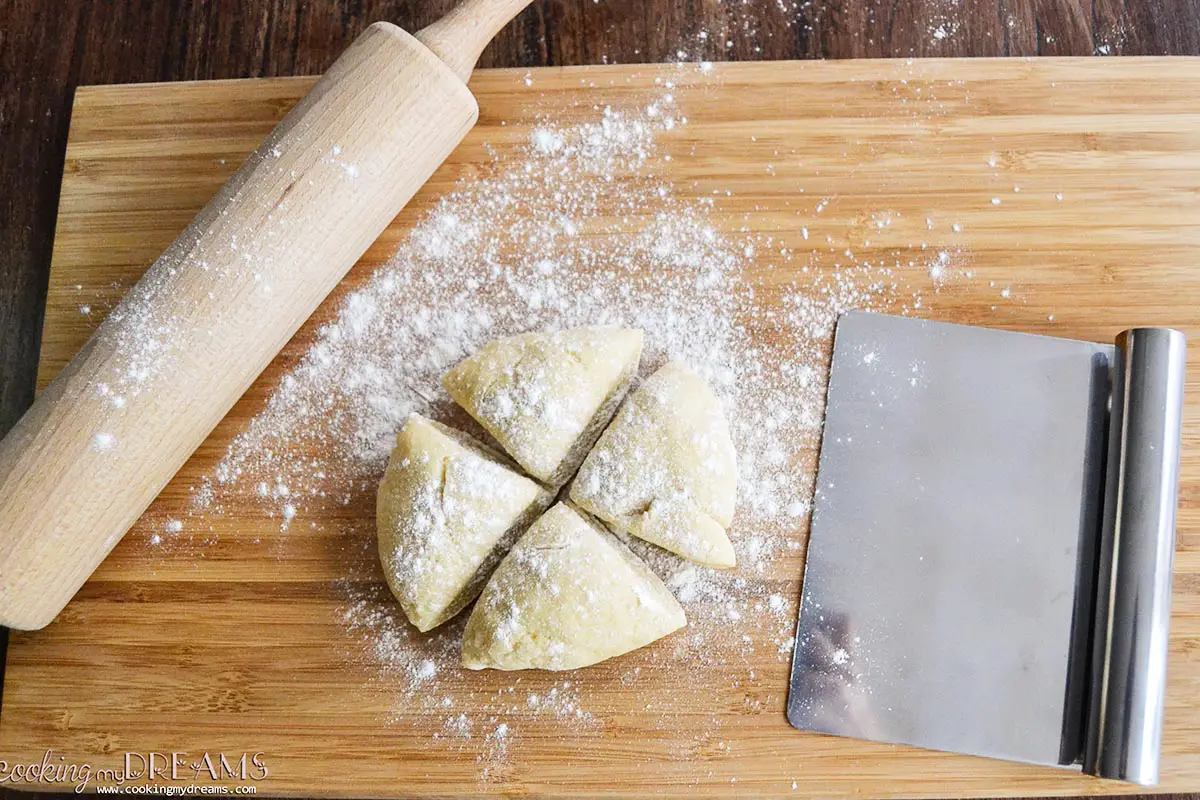
Step 1. Mix the eggs and flour in a bowl and knead the dough for a few minutes. Let it rest for 10-15 minutes.
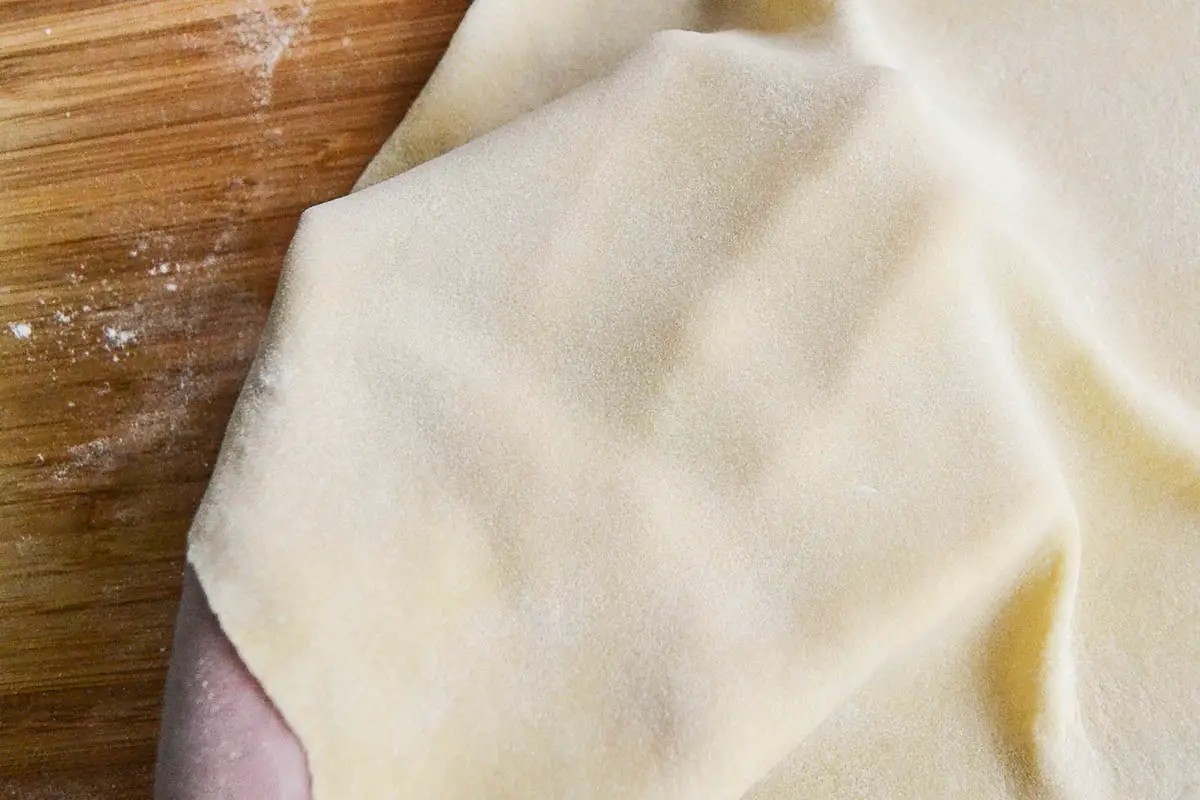
Step 2. Roll the dough into thin sheets.
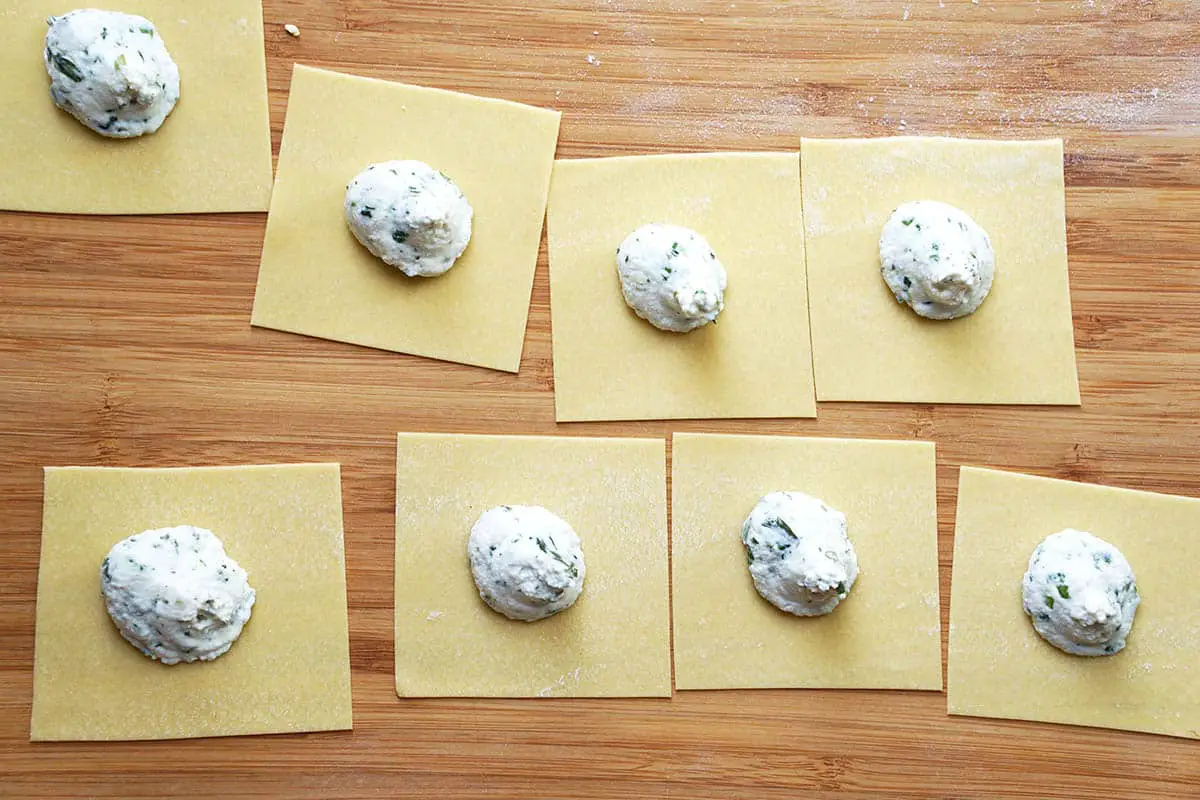
Step 3. Cut the pasta sheet into 2 ½” (6-7 cm) squares, then with a teaspoon or a sac-a-poche, add the Ricotta filling in the center.
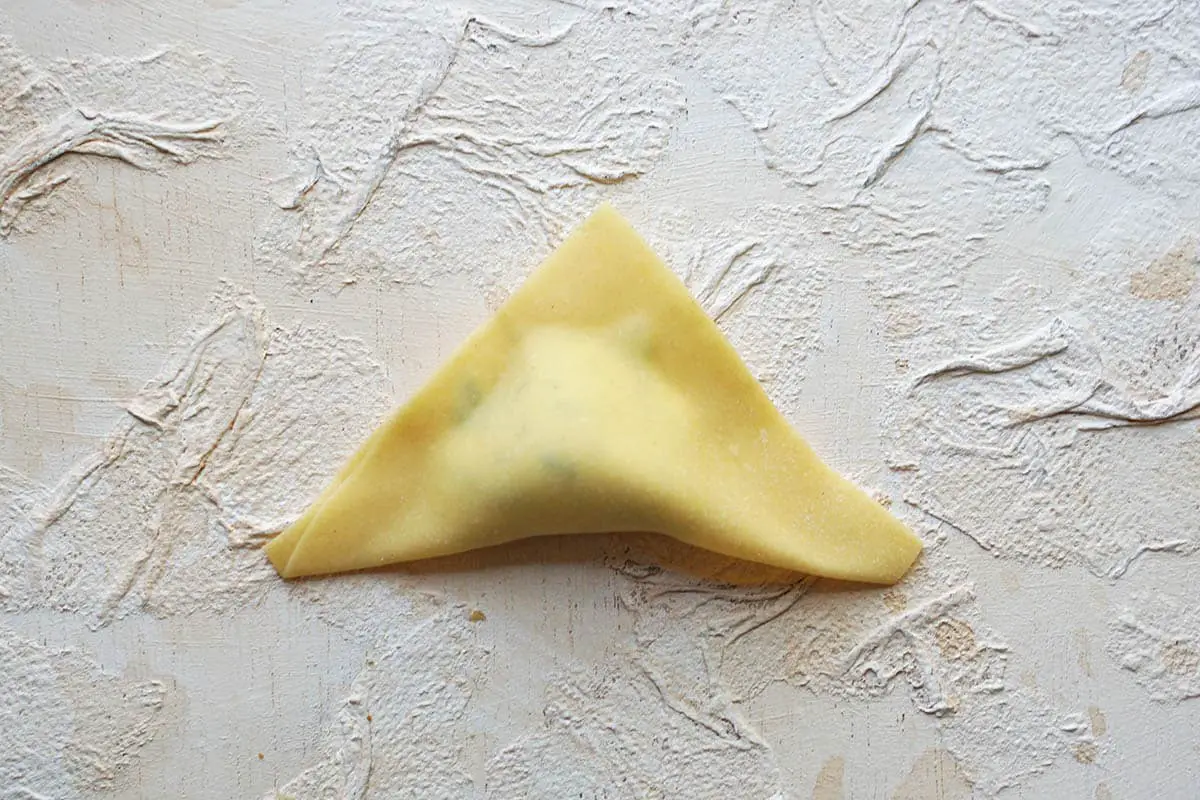
Step 4. Brush some water along the edges, then fold the square into a triangle.
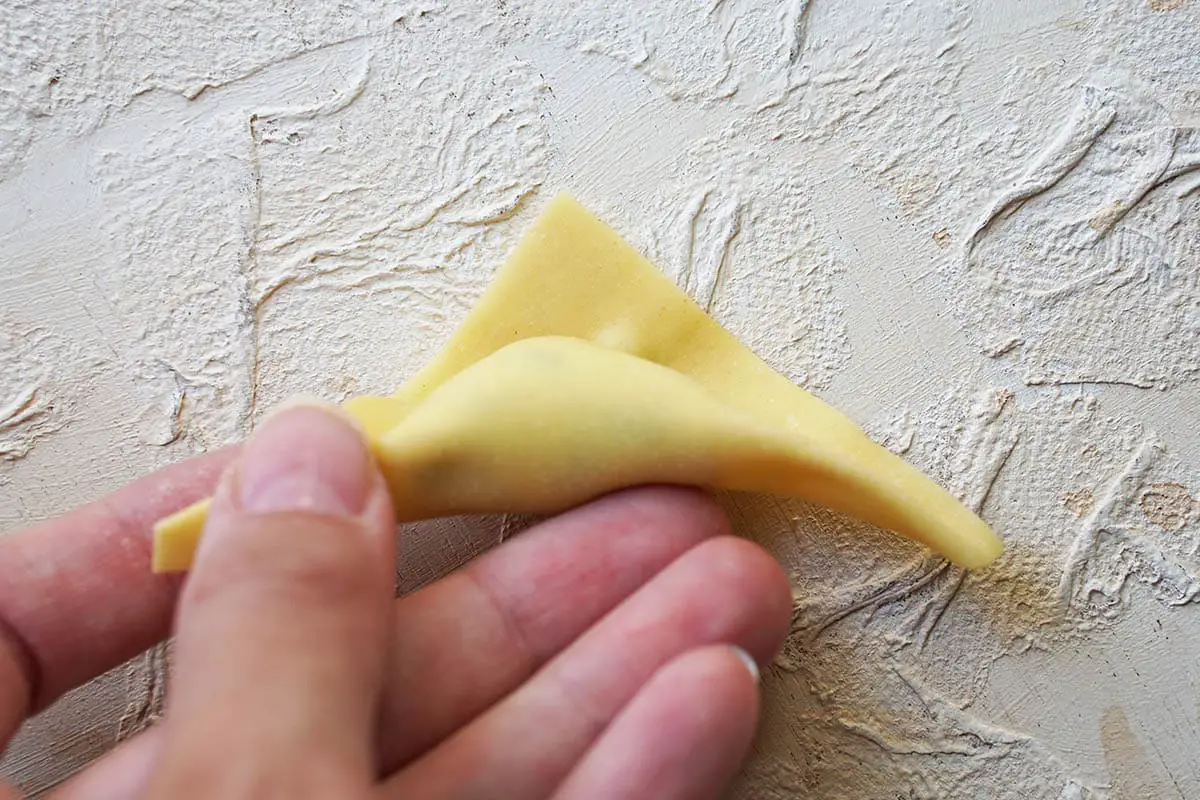
Step 5. Roll slightly the center towards the middle point.
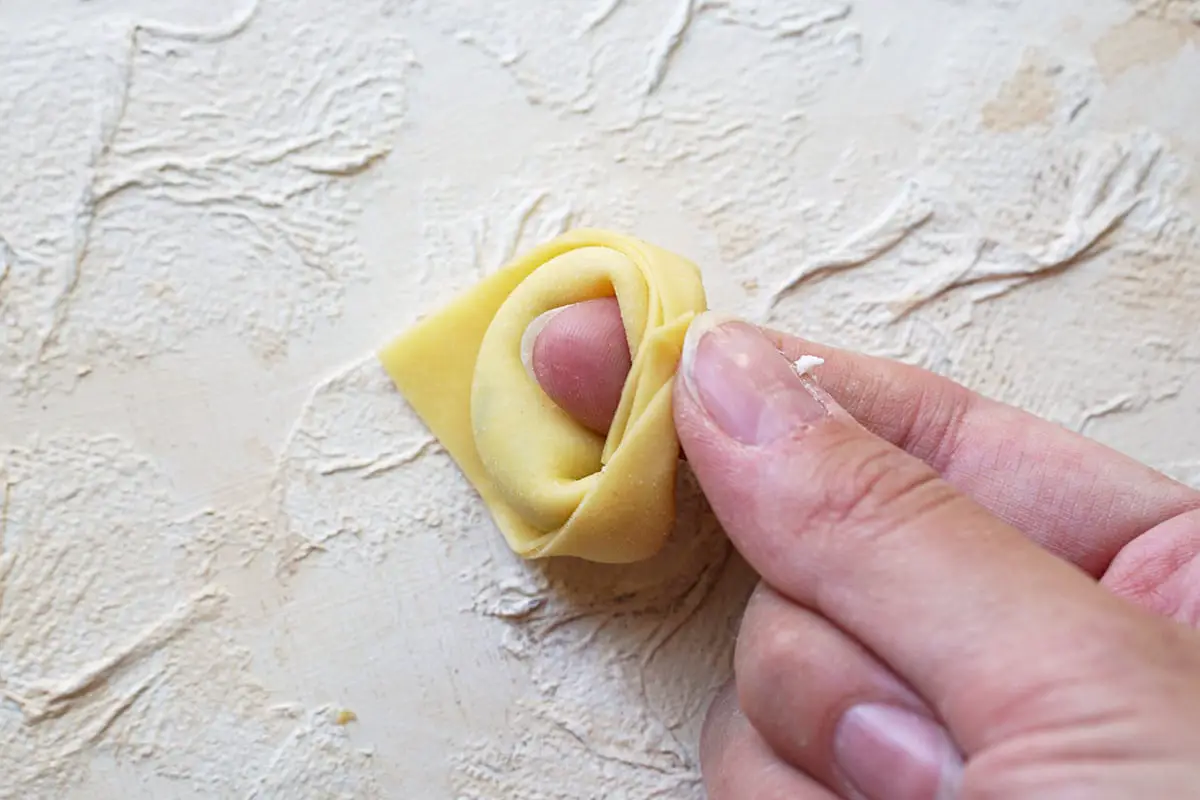
Step 6. Fold the outer corners around your finger and press well to close.
Now, place your tortelloni on a clean cloth to rest until you're ready to cook them.

Equipment
For crafting the Tortelloni with Ricotta and Fresh Herbs, having the right equipment on hand will make the process smoother and more enjoyable. Here's a comprehensive list to get you started:
- Pasta machine: A pasta machine is essential for rolling the dough to the perfect thickness. A manual pasta machine or a stand mixer attachment works well.
- Rolling Pin (Optional): If you don't have a pasta machine, a rolling pin can be used to roll out the dough, though it requires more effort to achieve the desired thinness.
- Pasta Cutter: For cutting the rolled-out dough into squares for the tortelloni.
- Herb Scissors: Needed for finely chopping the fresh herbs for the filling.
- Piping Bag: Add the right amount of filling easily on the pasta sheet.
Storage and Make ahead
You can store leftovers in an airtight container in the fridge for up to 1-2 days. Reheat on the stove by adding more butter, or in the microwave.
How to freeze fresh pasta
Frozen fresh pasta saved many dinners in my house. But be careful, you can only freeze the uncooked pasta. By freezing fresh pasta, you'll be able to make these tortelloni ahead of time and cook only at the last minute when you need to.
To freeze uncooked fresh tortelloni pasta, cover a flat tray or dish with parchment paper or aluminum foil, then add the tortelloni on top, making sure they're all well-distanced and not touching each other. Add the dish to the freezer for about 1 hour. This way they will not stick to each other in a pasta block. After 1 hour, remove it from the freezer and add all the tortelloni to a freezer bag. You can keep frozen for about 1 month. To cook, toss the frozen tortelloni directly into salted boiling water, without thawing first.
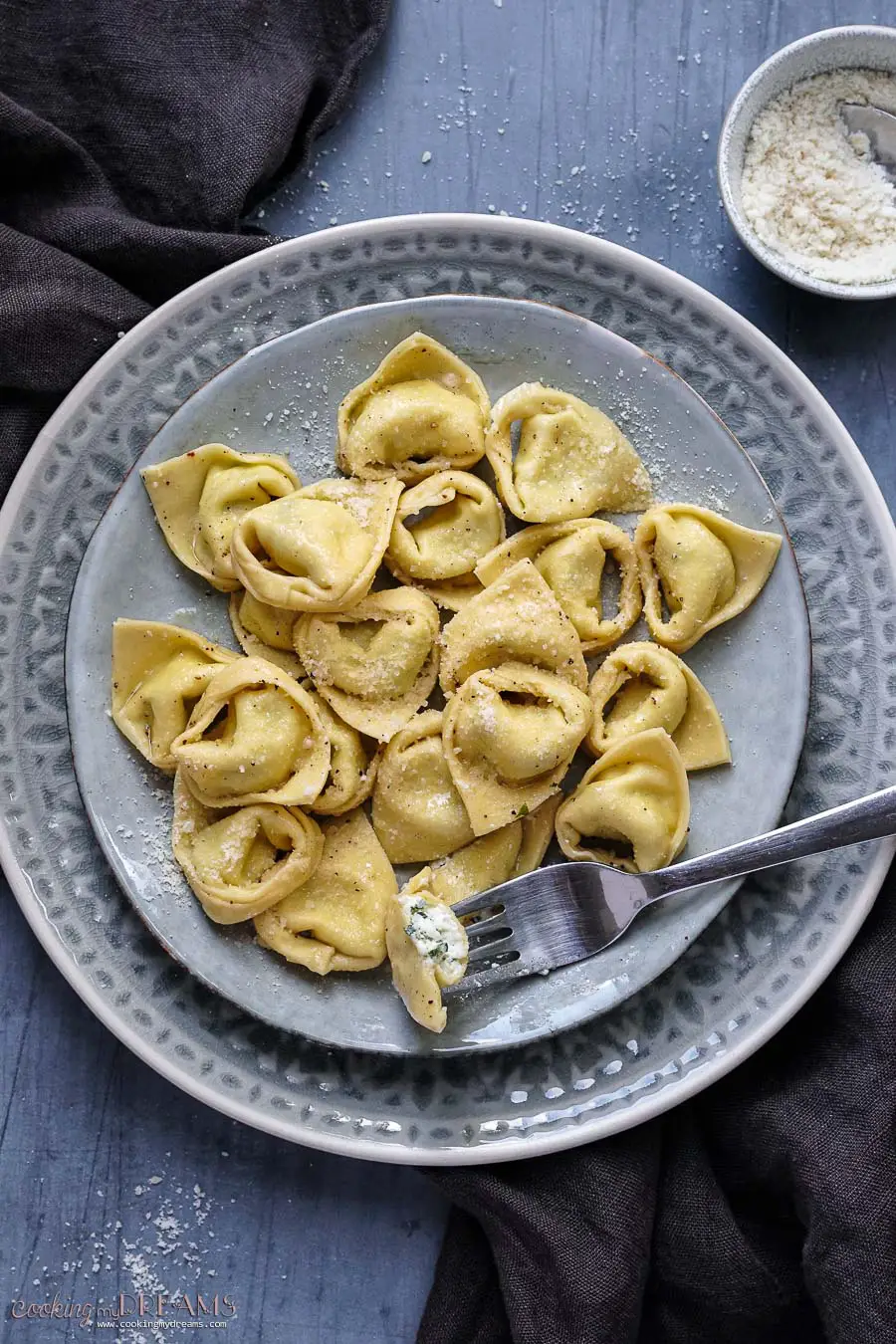
Serving Suggestions
Serve these divine tortelloni simply with melted butter, a sprinkle of fresh herbs, and a generous dusting of grated Parmesan. For a heartier meal, accompany them with a crisp, green salad or roast vegetables. A glass of crisp white wine, such as Pinot Grigio, complements the flavors beautifully.
FAQ & Tips
Yes, absolutely you can! You can freeze all kinds of raw fresh pasta for up to 1 month. See the post above for detailed tips on how to freeze pasta.
Yes, you can use any fresh herb you have available or also substitute it with dried herbs. But keep in mind that the flavor of your tortelloni filling will be more subtle if you use dried herbs.
Since I wanted the filling to shine, I opted for a classic butter and sage sauce with Parmigiano cheese. You can also opt for a cream sauce or a delicious tomato sauce, but they might cover up a bit the flavor of the filling.
Related recipes you might like:
If you tried this recipe, please take a moment to rate it and share your thoughts in the comments. Your feedback means a lot to me! ★★★★★
📖 RECIPE
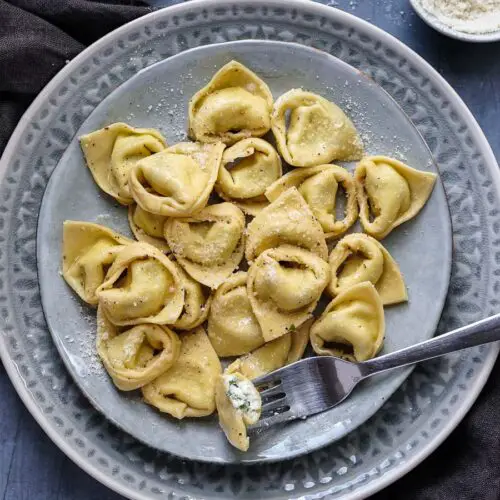
Fresh Herbs and Ricotta Tortelloni
Equipment
Ingredients
For the Tortelloni
- 2 Eggs
- 1 ¾ cups All-Purpose Flour
- Salt
For the Filling
- ½ cup Ricotta
- 1 tablespoon fresh Herbs, see notes
- 1 tablespoon Parmigiano cheese, grated
- Salt
- Black Pepper
- Nutmeg
For the Sauce
- 1-2 tablespoon Butter
- Parmigiano cheese, grated
- Black Pepper
- 3-4 Sage leaves, optional
Instructions
- In a large bowl, add the flour and a pinch of salt, then add the eggs in the middle and mix them well with a fork, slowly incorporating the flour. When the dough becomes too sticky to mix with a fork, start kneading with your hands. You can also move it to a floured board at this point.
- Knead energetically for 5-10 minutes, until you get a smooth and uniform dough. Cover with plastic wrap and set aside to rest for 10-15 minutes in the fridge.
- Meanwhile, prepare the filling. Finely chop all the fresh herbs, then add them in a small bowl together with the Ricotta and the grated Parmigiano. Add some salt, a tiny pinch of nutmeg and black pepper to taste. Mix well with a spoon and set aside.
- Divide the pasta dough into 3-4 parts, then start rolling them with a rolling pin on a floured board or with a pasta machine, first with the thickest setting a couple of times, then slowly making it thinner and thinner until it’s about 2 mm (1/16”).
- Cut the pasta sheet into 6-7 cm (2 ½”) squares, then with a teaspoon or a sac-a-poche, add the Ricotta filling in the center. Brush some water along the edges, then fold into a triangle. Roll slightly, then fold the points around your finger and press well to close.
- Place your tortelloni on a clean cloth to rest. While you are making them, bring a large pot of salted water to boil.
- When the tortelloni are all done, add the butter to a pan a turn on the low heat to melt it but not brown it. When the butter is melted, also add some sage leaves for flavor. Then, toss the tortelloni in the boiling water and cook for 2-3 minutes (it depends on the thickness of the pasta. Taste one to make sure the pasta is cooked).
- Drain the tortelloni and add them to the pan with the butter and sage. Add the grated Parmigiano and black pepper and toss to coat them well. Serve immediately.
Notes
Nutrition
Nutritional information is only an estimate. The accuracy of the nutritional information for any recipe on this site is not guaranteed.




